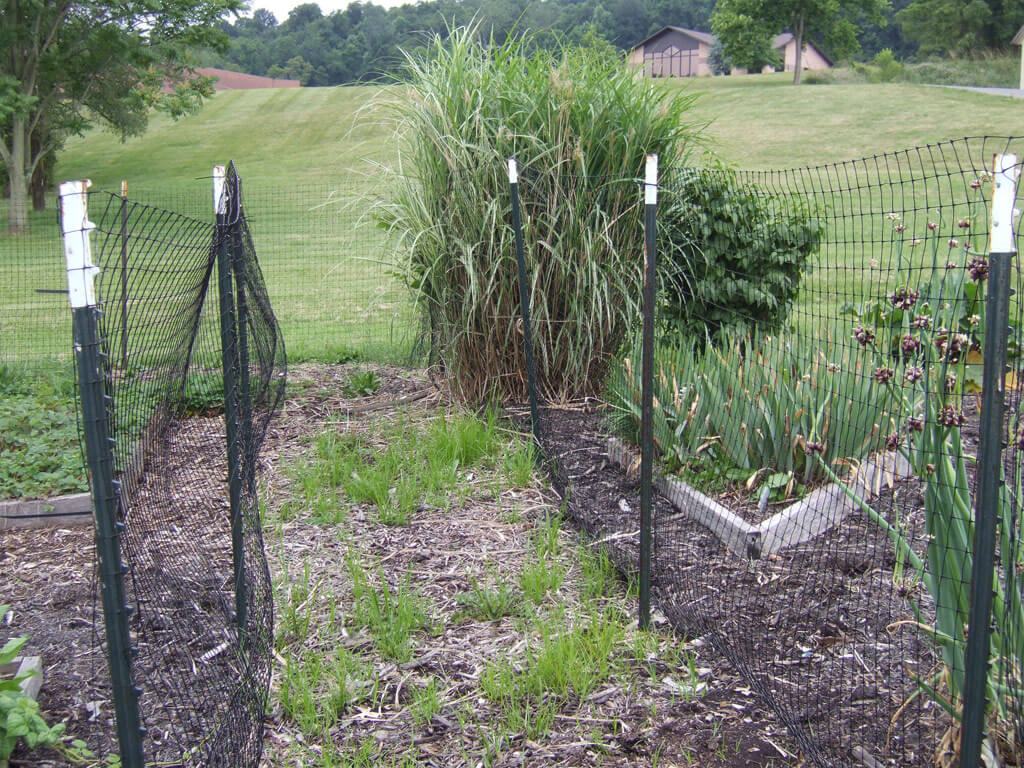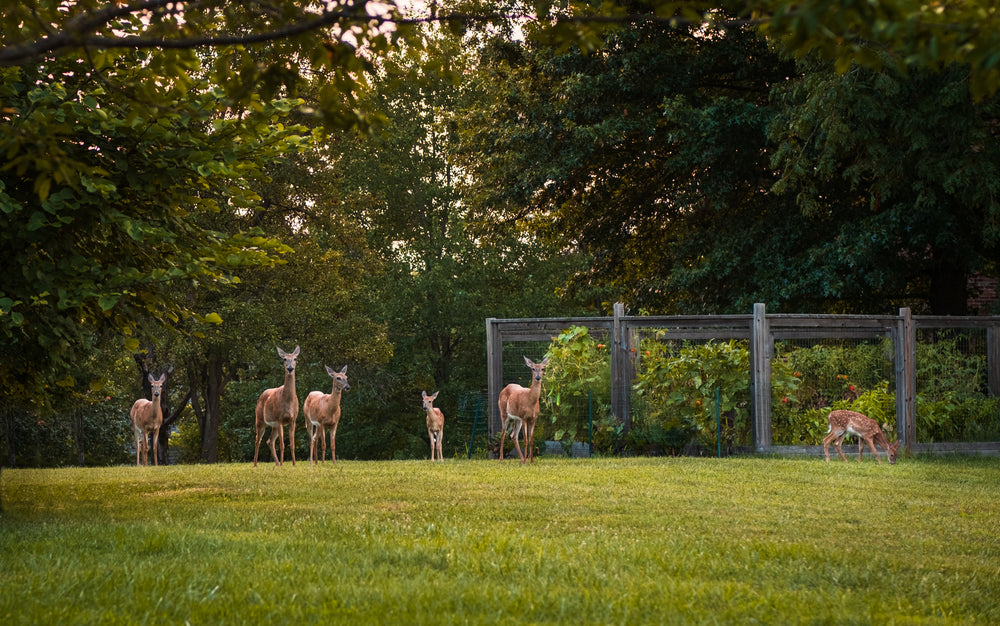The sight of a deer visiting your vegetable garden can ignite dread in even the most seasoned gardener. After all, a mature deer consumes from 6 to 10 pounds of food daily. What deer eat varies by region, season, and species, as well as by local habitat. In spring and summer, deer tend to feed more heavily, because pregnant and nursing does and antler-growing bucks must fuel their seasonal life stages. Of course, these are also the two seasons in which most folks grow their gardens — and therein lies the problem.
In the vegetable garden, deer tend to enjoy most of the crops you do, with the exception of rhubarb, asparagus, and garlic. Some gardeners report that deer don't favor onions or tomatoes, but other gardeners insist they do. It really depends on availability of other food. When food is scarce, deer eat just about anything, including prickly-stemmed okra and hot peppers. Vegetables that deer seem to prefer include beans, lettuce, cabbage, and cole crops such as broccoli, cauliflower, and Brussels sprouts.
Signs of Deer Activity
Deer prefer to feed in early morning, at dusk, and overnight, so unless you're outside at those times, you may never see a deer in your garden. Look for these clues to know if they've been there.
- Hoof prints. Deer prints resemble upside-down hearts. In soft earth, you may not see the actual print; instead you'll note deep, almost cylindrical holes poked into soil.
- Droppings. Look for small piles of round, pebble-like droppings.
- Trampled plantings. When deer walk through the garden, they don't always stick to the footpaths.
- Torn leaves. Deer lack upper front teeth (incisors), so when they bite a plant, they jerk their heads and pull, creating a ragged, torn edge on leaves and stems. Rabbits and gophers, on the other hand, have both upper and lower incisors, so their feeding creates neatly clipped edges. When they chew on your plants, it looks like someone has gone through the garden with clippers.

Protecting Your Garden Against Deer
To prevent deer from feasting in your garden, you have four choices.
Physical barriers
Physical barriers are perhaps the most effective method you can use to keep deer at bay. These includes fences and covers, such as plastic netting, chicken wire, or floating row covers that you place over plants so deer can't reach them. Covers work well with shorter crops, like lettuce, squash, or bush beans. Anchor lightweight covers in place so high winds don't displace them.
Lightweight polypropylene fences are easy to erect, and the plastic becomes invisible in a landscape. You can also erect a double fence, spacing the inner fence 3 to 5 feet from the outer one. Deer cannot leap a tall and wide fence area at the same time. When using a double fence, you can usually reduce fence height to 5 to 6 feet. Pounding stakes into the landing zone (3 to 5 feet from the fence) should also deter deer from taking the leap, as they usually won't jump unless they can see a clear landing area.For fencing, a pretty picket won't suffice. Deer are jumpers, and motivated or frightened deer can leap as high as 8 to 12 feet, depending on the species. (Check with your local extension office to learn which deer are in your area and how high they can jump.) Fences shorter than 8 feet may deter deer, but if they can see your tasty garden through the fence, that height won't usually stop them. The fence in the illustration at the top of the page is an excellent example of tall, effective fence that still allows the beauty of your garden to show through. If you prefer not to build higher, though, consider a solid, stockade-style fence to block their view.
Electric fencing can be effective as well, provided the charge is strong enough, the wires don't start too high off the ground (allowing the deer to crawl under) and the electricity is left on at all times. You'll want to hire an experienced professional to install it. Consider using a money-saving solar charger to supply the power.

Scare tactics
Many options exist to frighten deer, but realize that these critters are adaptable. They'll learn quickly whether a repetitive noise poses a true threat. If it doesn't, they'll soon begin to ignore it and resume munching your veggies. Motion-triggered devices that squirt water, turn on a radio, or emit an irritating high frequency sound may work a bit better.
A barking dog is a good deer deterrent, but only if it has free range in the yard (or a long tether) and doesn't bark incessantly. Deer quickly figure out if a dog poses a true threat, and will ignore non-stop barkers and pooches that are corralled in a run that's separate from the garden.
Predator urine gives deer a fright by making them think a predator visits your garden. Note that liquid urine requires frequent application — as much as every week — and can be expensive for treating a large garden. Hanging liquid dispensers may be a preferable option, as they require only monthly refills. Granular forms can work effectively for treating large areas.

Repellents
Most repellents—homemade or manufactured—feature things like hot pepper, garlic, sulphur, and rotten eggs. Research at the USDA/National Wildlife Research Center in Olympia, Washington, has shown that:
- Repellents that emit sulfur odors, like that found in egg products or bloodmeal, provide the best control;
- Repellents applied to leaf surfaces are more effective than those (such as capsules or reservoirs) that release an odor intended to create a perimeter;
- Repellents that cause plants to taste bitter are the least effective.
In general, most repellents offer protection in some cases, but not in others. Most gardeners get the best results through consistent applications and by rotating repellents.
Use caution when applying repellents to vegetables and herbsthat you'll eat. Make sure you follow label instructions carefully—you don't want to make your harvest inedible. You may want to try using repellents to treat young crops, before they've begun bearing a harvest, as those treatments can train deer not to return for future feasting.
Crop selection
While you may not want to fill your garden with rhubarb, asparagus, and garlic, you can use these plants to disguise desirable crops. Some gardeners report success by placing plants that deer don't like (others include rosemary, oregano, and as a border around those plants they prefer to munch. As with so many other deterrents, sometimes it works and sometimes it doesn't — but it doesn't hurt to try!
Article by Julie Martens.Illustration by Steve Asbell of therainforestgarden.com.




 Herbs
Herbs
 Vegetables
Vegetables
 Fruit
Fruit
 Flowers
Flowers
 Succulents
Succulents


